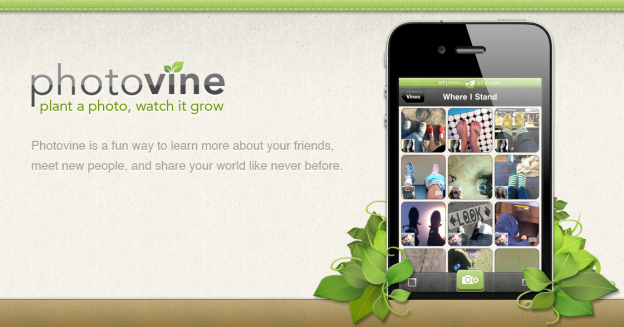
Google-owned website photovine.com has launched — but we still have little clue as to what Photovine actually is. Judging by the name, and the only graphic on the website — an iPhone 4 with tiles of various photos on the screen — it’s obvious that Photovine has something to do with, well, photos. The presence of the iPhone suggests that Photovine is an iOS app. Beyond that, however, everything becomes a bit more vague.
According to the FAQs on the Photovine website, “Photovine is a community that’s about creating fun and unique collections of photos that we call Vines.” Um, ok… So, how does Photovine work?
“In Photovine, vines connect you with people through the ideas and themes expressed in your photos,” says the site. “A vine is like a constantly growing family of photos connected through a common caption created by you, your friends, and people all over the world.”
In other words, users can follow each other, as they do on other social networks. From there, they can interact through the Photovine network.
The site says that users can start a new vine “by taking a photo and creating a new caption.” User can also add these elements to an existing vine. “Other people will see your vine and join in by adding their own photo, showing their own take on the caption.”
The Photovine “Support” page warns that “the Photovine community is uber public. Anyone can see your photos, even if they’re not following you. Being able to find like-minded strangers and make new friends is part of what makes Photovine so fun and unique.”
By this description, Photovine sounds a bit like Color, which was controversial for its public photo-sharing functionality, but has all but died since its launch.
Google filed a trademark of the term “Photovine” in the middle of last month, and speculation immediately arose of a new photo-sharing service from the company. Since we last reported on Photovine, however, Google has launched its new full social network, Google+. It is so far unclear whether the two services will be connected.


